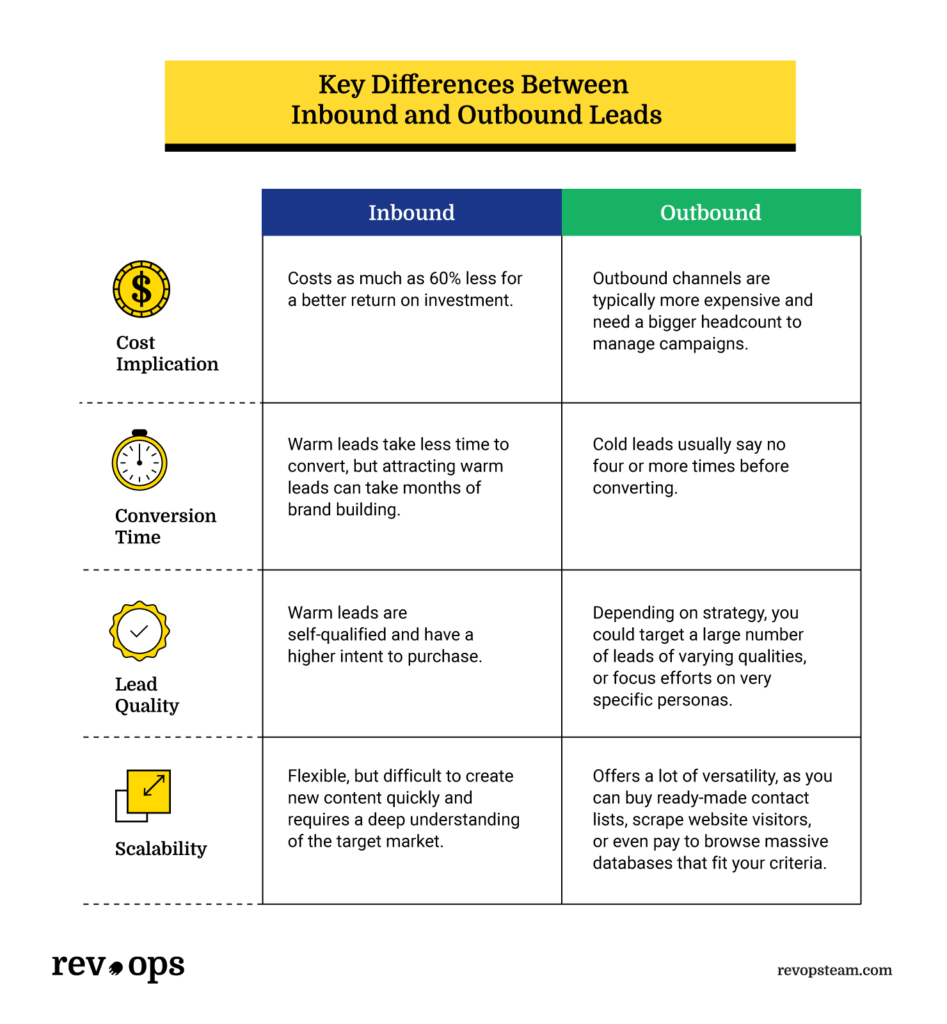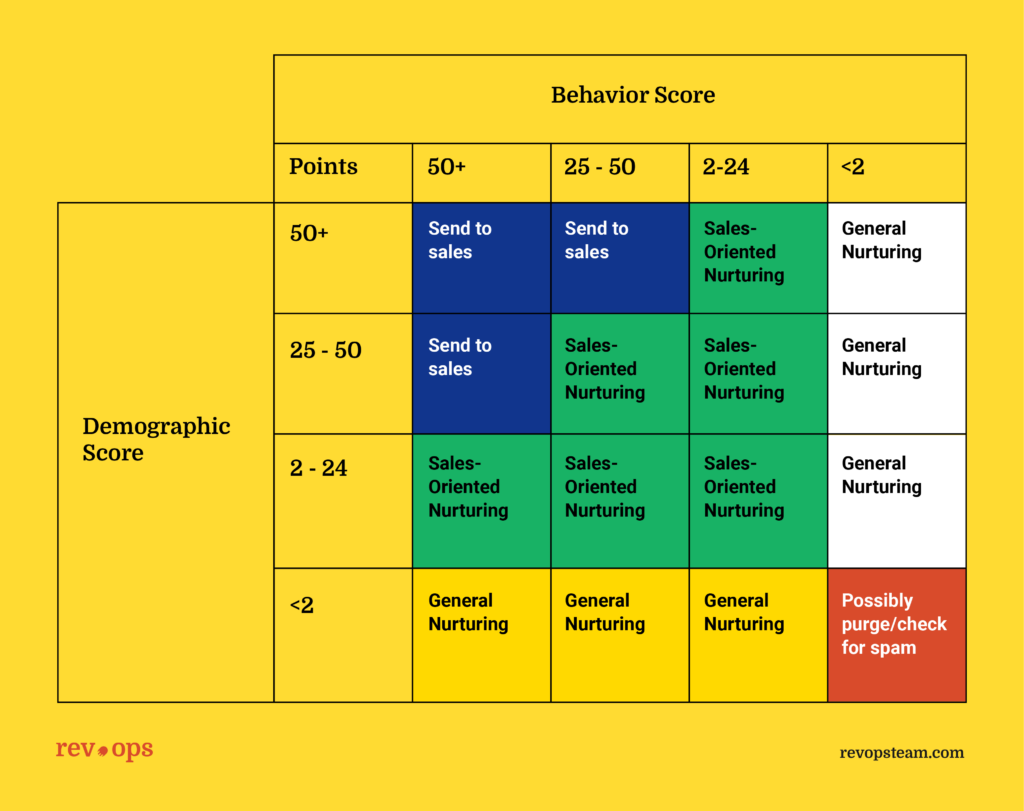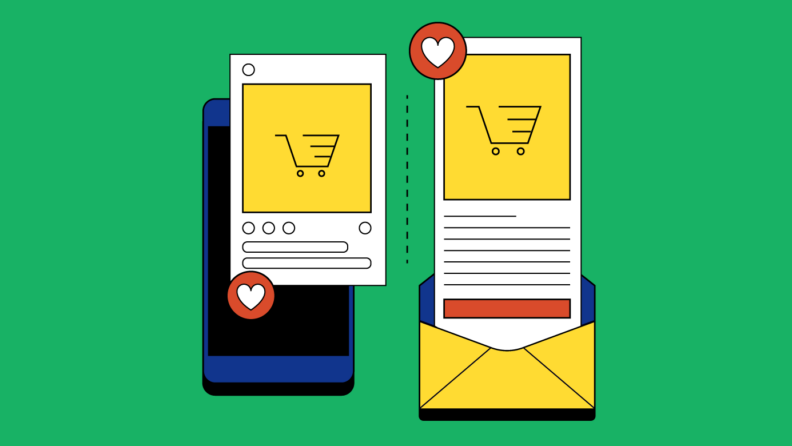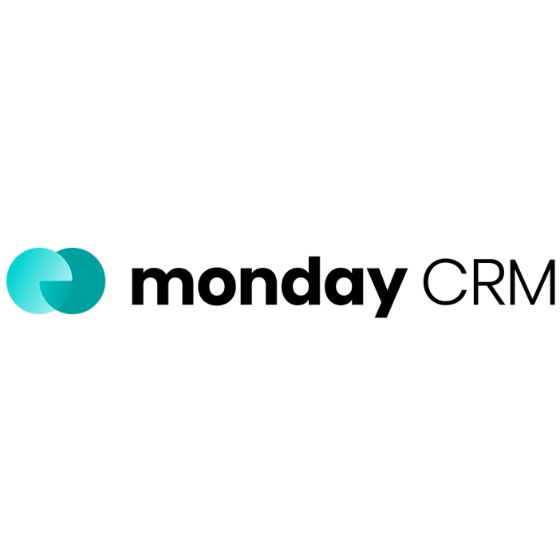Patience Pays Off: Building inbound traffic takes time and effort but leads to cost-effective and higher-quality conversions.
Crafty Content: Effectively use content marketing, SEO, social media, email marketing, and webinars to attract inbound leads.
Outbound Outfoxing: Outbound leads require proactive strategies like cold emailing, cold calling, paid ads, and LinkedIn outreach.
Balancing Act: The key lies in balancing both inbound and outbound tactics to build a robust and efficient lead generation pipeline.
Inbound vs outbound leads — which to choose? Strike the right balance, and you’ll build an efficient pipeline of leads who convert into long-term customers. Over-invest in either, and you’ll likely spend more money acquiring the customer than you’ll earn in their customer lifetime. I'll help you sort it out.
What Are Inbound Leads?
Inbound leads are potential customers who find their way to your business on their own, often through content you've put out there, like blog posts, social media, or SEO-optimized web pages.
Instead of you reaching out to them, they’re actively looking for solutions and end up engaging with your brand. Essentially, they’re raising their hand and saying, "Hey, I’m interested in what you offer!" because they’ve come across something valuable you’ve shared.

In the context of a marketing funnel, inbound leads are usually warmer since they've already shown interest, whether by downloading a whitepaper, signing up for a newsletter, or even requesting a demo.
They're a key part of a pull marketing strategy, where you're attracting and nurturing leads organically instead of pushing your message out to a cold audience.
Pros and Cons of Inbound Leads
Inbound lead generation comes with its own set of pros and cons. On the plus side, these leads are usually further along in the buying process. They’ve already heard about your product, feel more confident about your brand, and are much more open to hearing your sales pitch. This makes them easier to work with compared to colder leads.
| Pros | Cons |
| Cost-effective: Lower customer acquisition costs compared to outbound efforts. | Takes time: Building organic inbound traffic can take months or longer. |
| Higher conversion rates: Inbound leads are typically more interested and engaged. | Requires content investment: High-quality content, SEO, and social media presence are necessary. |
| Better targeting: Inbound strategies attract leads already searching for solutions. | Hard to control lead volume: Inbound strategies can lead to unpredictable traffic and lead generation spikes or drops. |
| Scalability: Content and SEO strategies can scale over time without ongoing cost increases. | Limited reach: Inbound leads may not always represent your entire target audience. |
| Builds long-term relationships: Inbound methods like content marketing create trust and authority over time. | Ongoing optimization: Inbound tactics require continuous effort to maintain SEO rankings and relevance. |
On the flip side, inbound lead generation has its challenges. It takes time to create the kind of high-quality content that really grabs attention and helps build a strong online presence. Plus, there’s usually some trial and error involved in figuring out how to reach your target audience. You might still be honing in on your ideal buyer persona and trying to fully understand what they need, which can make things a bit tricky at first.
Overall, inbound marketing tactics like content marketing cost 62% less than traditional outbound marketing, while bringing in higher quality leads that have more trust in your business and are more likely to convert.
Inbound Lead Generation Tactics
Valuable content is the name of the game in inbound lead generation. Rather than going out and chasing leads, inbound tactics help bring them to you, often when they’re already searching for solutions.

Here are five of the most effective inbound lead generation strategies you can use to boost your sales pipeline:
- Content Marketing: Creating valuable, engaging content like blog posts, case studies, and whitepapers helps attract potential leads who are searching for answers or solutions in your niche. The key is to offer insights or information that positions your brand as an expert in the field, leading to higher trust and better-qualified leads.
- Search Engine Optimization (SEO): Optimizing your website and content to rank higher on search engines ensures that when someone is looking for a product or solution like yours, they find you first. Strong SEO involves everything from keyword research to optimizing on-page elements and building high-quality backlinks.
- Social Media Engagement: Social platforms are a great way to share content, build relationships, and interact with your audience. Regularly posting, engaging with followers, and running targeted campaigns can help drive traffic to your website and convert casual browsers into leads.
- Email Marketing: Sending out personalized and relevant emails to your subscribers keeps your brand top of mind while nurturing them through the sales funnel. Whether it's through newsletters or drip campaigns, email helps you maintain contact and build relationships over time.
- Webinars and Online Events: Hosting webinars or online events allows you to showcase your expertise while providing value in real time. Not only do these events attract potential leads, but they also give you a direct way to engage with them and answer their questions, moving them further down the sales funnel.
Best Practices for Nurturing Inbound Leads
While inbound leads are more likely to be ready to buy, they can still be in the researching phase and testing out their options. This is where inbound lead nurturing comes in—a series of touchpoints that will guide them through the sales funnel, helping them move closer to a purchase decision over time.
Here are six key tips for effectively nurturing your inbound B2B leads:
- Know Your Audience: Understanding who your leads are and what they’re looking for is crucial. Use data, buyer personas, and customer insights to tailor your messaging and content to their specific needs, pain points, and stage in the buying process.
- Personalize Your Communication: No one wants to feel like they’re just another number. Use the data you’ve collected to tailor your emails, messages, and content to address their specific needs and interests. Personalized outreach in nurture campaigns makes leads feel valued and keeps them engaged.
- Leverage Marketing Automation: Automating certain parts of your lead nurturing process, like sending follow-up emails or tracking user behavior, saves time and ensures that leads are receiving the right content at the right time. Tools like drip campaigns can automatically send targeted messages based on where a lead is in the funnel.
- Offer Value at Every Stage: Keep providing useful content as your leads progress through the funnel. Whether it’s a how-to guide, a case study, or a product demo, offering value at each touchpoint builds trust and keeps your leads moving forward.
- Stay Consistent and Timely: Consistency is key in nurturing leads. Make sure you’re following up regularly without overwhelming them. Timely communication with leads can make a huge difference in moving them closer to a decision.
- Align Sales and Marketing Teams: Make sure your sales and marketing teams are aligned on messaging and strategy. When both teams are on the same page, it creates a smoother experience for the lead and improves the chances of closing the deal. This means sales should pick up right where marketing left off, with no gaps in the process.
-

monday CRM
Visit WebsiteThis is an aggregated rating for this tool including ratings from Crozdesk users and ratings from other sites.4.6 -

Capsule
Visit WebsiteThis is an aggregated rating for this tool including ratings from Crozdesk users and ratings from other sites.4.7 -

HubSpot
Visit WebsiteThis is an aggregated rating for this tool including ratings from Crozdesk users and ratings from other sites.4.4
What Are Outbound Leads?
Outbound leads are pre-qualified prospects who are a good fit for your solution, but might not have heard of your company yet or aren't actively looking for your product. Getting the attention of outbound leads usually involves strategies like cold calling, cold emailing, or running ads targeting your ideal customer profile.
With outbound leads, you're taking the initiative by pushing your message out to prospects, rather than waiting for them to discover you.

In terms of the marketing funnel, these leads are often at the very top or even outside of it, so they're typically colder (albeit highly qualified) than inbound leads and may need more convincing to show interest in what you’re offering.
Pros and Cons of Outbound Leads
While outbound sales is a more proactive approach, it comes with its own set of advantages and disadvantages. Before launching a cold email sequence or making calls, you'll need to do thorough research.
| Pros | Cons |
| Faster lead generation: Outbound tactics can quickly identify and target potential leads. | Higher costs: Outbound strategies like paid ads and cold outreach can be expensive. |
| Predictable lead volume: You have more control over how many prospects you reach out to. | Lower conversion rates: Outbound leads are typically colder and less engaged, making them harder to convert. |
| Can target specific audiences: Outbound allows you to go after high-value targets directly. | Perceived intrusiveness: Cold outreach can be seen as interruptive or unwanted, potentially harming brand perception. |
| Immediate feedback: Outreach efforts can provide instant insights into messaging and market fit. | Requires more resources: Outbound tactics often need dedicated sales or marketing teams to execute effectively. |
| Expands brand awareness: Helps introduce your product to people who may not have found you otherwise. | Limited scalability: Scaling outbound efforts can quickly become cost-prohibitive without a large budget. |
It’s essential to qualify your leads—ensuring they actually need your product, have the budget, and the authority to make purchasing decisions. Many sales teams use methodologies like BANT or MEDDIC to focus their efforts on leads that are more likely to convert.
If your outbound strategy is well-targeted and personalized, you’ll increase your chances of closing deals. That said, outbound leads often say "no" multiple times before they say "yes," which makes follow-ups absolutely crucial.
Some major drawbacks of outbound lead generation include:
- Cost: Outbound efforts like direct mail, telemarketing, and ads can get expensive. Plus, you often need tools like CRM platforms to manage leads effectively.
- Lead quality: It can be tough to guarantee you're reaching the right people—especially those with the actual buying power.
- Resistance to outreach: Spam filters and call screening make it harder to get through, and cold emails usually see low open and reply rates.
Outbound Lead Generation Tactics
Outbound lead generation is much more direct than inbound. It's all about putting your brand in front of the right people, often through a mix of targeted outreach and advertising.
These tactics help you connect with leads that might not even be aware they need your product yet. Here are five key outbound lead generation strategies that can help drive results:
- Cold Emailing: A well-crafted cold email can open the door to new opportunities. The key is to keep it concise, personalized, and value-driven, highlighting how you can solve the prospect’s problem without being overly salesy.
- Cold Calling: Despite its reputation, cold calling is still a highly effective way to generate leads. It allows you to have real-time conversations with potential customers, answer questions, and overcome objections on the spot. Just be sure to do your research before dialing.
- Paid Ads: Whether it’s through Google Ads, LinkedIn, or other platforms, paid advertising lets you target specific audiences based on demographics, interests, and behaviors. It’s a great way to reach prospects outside your organic network.
- Direct Mail: While less common in the digital age, direct mail can stand out in a crowded inbox. Sending a well-designed piece of mail, whether it’s a brochure or a personalized offer, can catch a prospect’s attention and spark interest in your product.
- LinkedIn Outreach: LinkedIn is a goldmine for outbound lead generation, especially in B2B. By connecting with decision-makers and sending personalized messages, you can create meaningful conversations and move leads into your pipeline more efficiently.
Best Practices for Nurturing Outbound Leads
Nurturing outbound leads requires a strategic approach, since these leads haven’t necessarily shown interest in your product yet. The key is to gradually build trust and provide enough value to turn those cold leads into warm ones.

It’s not just about persistence; it’s about the quality of your follow-ups and the relevance of your messaging. Here are five essential tips for nurturing outbound leads:
- Follow Up Consistently: Outbound leads often need multiple touchpoints before they respond. Consistent follow-ups are key, but you don’t want to be overly aggressive. Space them out thoughtfully and keep adding value with each interaction.
- Personalize Your Outreach: Instead of sending generic messages, tailor your outreach to the specific needs and pain points of the prospect. Research the company and decision-maker to make your communication more relevant and engaging.
- Provide Value in Every Interaction: Whether it’s sharing an article, offering a helpful resource, or pointing them toward a case study, always provide something of value in your communications. This shows you’re not just pushing for a sale but genuinely trying to help.
- Leverage Multiple Channels: Don’t rely on just one method of outreach. Combine emails, phone calls, LinkedIn messages, and even personalized ads to stay top of mind and increase your chances of engagement.
- Keep an Eye on Timing: Timing is crucial in outbound lead nurturing. Keep track of when leads respond, their buying cycles, and any potential shifts in their industry. Reaching out at the right moment can make all the difference in converting a lead into a sale.
Land more meetings with the right cold calling software.
Key Differences Between Inbound and Outbound Leads
You’ve probably already noticed some of the main differences between inbound and outbound lead generation. But to make it even simpler, it really comes down to their approach and focus.
Inbound is all about attracting customers by offering valuable content, while outbound is more interruptive, trying to grab their attention directly.
| Inbound lead generation | Outbound lead generation |
| Relies on organic growth channels like social media posts, search-optimized blog content and referrals from reviews. | Uses paid marketing campaigns like social media ads, Over-The-Top ads, Pay-Per-Click ads, and Local Service Ads |
| Higher quality leads because they show interest first. | Lower quality leads because you’re casting a wide net. |
| Harder to personalize for one person. Mostly segments. | Easier to personalize for one person. |
| Reaches a lesser but more tailored audience. | Reaches a large but less tailored audience. |
| Easier to measure the results | Harder to measure efforts |
| Cost less over a longer duration | Cost more over time |
| Less control over sales process | More control over sales process |
To put it another way, inbound pulls leads in by leveraging your branding and messaging, whereas outbound pushes your message out to people who might not even know about you yet.
With inbound, the focus is more on educating and building relationships, rather than just trying to sell something. It’s about helping potential customers make informed decisions. On the flip side, outbound is more sales-driven, with the goal of proactively finding leads and making the sale.

Balancing Inbound and Outbound Strategies
The question really isn't inbound vs. outbound, but how best to mix the two to maximize both short-term wins and long-term growth. You need both to build a reliable sales pipeline and revenue engine.
Here are five tips to help you strike that balance:
- Budget and Resource Allocation: Balancing these strategies also means carefully managing your budget and team’s time. Outbound can be resource-heavy with ads and outreach, while inbound might require ongoing investment in content and SEO. Make sure you’re spreading your resources where they’ll have the most impact based on your goals.
- Know Your Customer Journey: Inbound leads typically enter the funnel later, already aware of your product, while outbound leads may be at the very top and need more nurturing. Make sure your strategies are aligned with where your customers are in their buying journey.
- Use Data to Drive Decisions: Track how leads are coming in and where they convert best. If inbound leads are closing faster or with higher lifetime value, lean into that. If outbound is delivering quicker short-term results, adjust your efforts accordingly. Let the data guide your focus.
- Align Sales and Marketing: For a balanced strategy, your sales and marketing teams need to work together. Marketing can generate inbound interest with content and SEO, while sales can actively reach out to those higher-value outbound targets. Consistency in messaging and goals is crucial.
- Diversify Your Lead Sources: Don’t rely too heavily on one approach. Inbound leads might slow down if content isn’t hitting, and outbound campaigns can be expensive or hit a dead end. Diversifying lead sources helps you weather changes in the market and ensures a steady flow of leads.
Leveraging Technology
There are a ton of tools that can organize, manage, and automate your lead generation strategies. The top lead generation software options include offerings from companies like HubSpot, LeadsBridge, Overloop, and Dealfront — each designed to target a specific type of lead generation and certain contact preferences. These are a few of my underrated favorites:
Measuring and Analyzing Performance
Never set it and forget it. Lead generation is an ever-evolving practice that requires testing, tweaking, and monitoring to find the right mix for success.
Here’s how you can leverage data analysis, lead scoring, and key performance metrics to get the most out of your lead generation effort.
Data Analysis
By digging into your data, you can identify which channels, content, or outreach tactics are bringing in the highest-quality leads.
For inbound, you might look at which blog posts or landing pages are driving the most traffic and conversions. On the outbound side, you can track the effectiveness of cold emails, ads, or calls to see what’s actually resonating with your audience. The idea is to double down on what’s working and cut back on what’s not.
Lead Scoring
This helps you prioritize your efforts by assigning values to each lead based on their behavior and engagement level.

Inbound leads might get points for downloading an ebook or visiting a pricing page, while outbound leads could be scored based on how they’ve responded to your outreach.
High-scoring leads are more likely to convert, so you can focus your energy on nurturing those leads further down the funnel.
Campaign Performance Metrics
For inbound, you’d track lead generation metrics like organic traffic, conversion rates, and content engagement.
For outbound, you’d look at response rates, cost per lead, and conversion rates from cold outreach. Analyzing these metrics helps you refine your messaging, adjust targeting, and allocate your budget more effectively.
By combining these approaches, you get a clear picture of what’s driving results, allowing you to optimize both your inbound and outbound strategies for maximum ROI.
Navigating Market Trends in Lead Gen
As the market shifts and customers’ preferences or buying habits change, your approach to inbound and outbound strategies needs to adapt too.
On the flip side, if the market becomes more competitive or saturated, you might need to ramp up your outbound efforts to stand out. Targeted outreach, personalized ads, or cold emails could be the extra push to get in front of leads who might not find you on their own.
Customer behavior can also indicate which channels are most effective. If your audience is shifting to social media for information, for example, you might want to adjust both your inbound and outbound tactics to be more social-focused—posting more relevant content or running ads on the platforms they use most.
Ultimately, staying on top of trends and being flexible with your strategy ensures you’re meeting your leads where they are, with the right balance of inbound attraction and outbound outreach.
Inbound vs. Outbound—Use Both
Whether you’re interested in attracting potential customers with relevant content (inbound lead gen) or you’re cold calling a bought contact list (outbound lead gen), you can blend both and create an effective approach to meeting your goals.
Find the right balance by using reporting and analytics to track KPIs and metrics, adjusting as needed to keep up with buyer demands and market trends.
Need Help With Lead Gen?
Our advisors can help you find the right software tool to ramp up your lead gen.
Frequently Asked Questions: Navigating the Lead Labyrinth
How do I decide between inbound and outbound leads?
You don’t have to think of your options in black and white, inbound vs outbound leads. You can blend several types of lead generation. However, if you’re looking for a place to start, here are my recommendations:
- Choose inbound strategies if you prefer acquiring warm leads through content creation, you’re willing to wait for your leads to come to you, you sell to a wide range of customers, and you prefer leads who choose to interact with your organization.
- Choose outbound lead generation if you already have a list of leads, you want to reach more people in less time, and you have a large budget to spend on acquiring, sorting, and qualifying new leads.
What are some advanced techniques for nurturing both lead types?
Some advanced lead nurturing techniques include retargeting, surveys, and email nurturing.
Whether a lead found you on social media or signed up to your email list at a trade show, retargeting means you contact them again through various channels, including paid ads, to provide additional information. Avoid sharing old news your leads already know.
Surveys are a very nuanced type of nurturing, as there is an appropriate moment to reach out during the buying journey. Don’t pitch your product too early. Instead ask relevant, unobtrusive questions that will direct your future actions.
With email nurturing, you have a cost-effective way to re-engage leads. You can more easily manage most campaigns with automated sequences that send out relevant content to specific segments of your email list.
What’s the role of RevOps in managing inbound vs outbound leads?
RevOps is an essential part of lead management because it helps you align all your operations in customer success, sales, and marketing. The actions and reactions of every team all move toward the same goal with the help of a centralized source of data, advanced analytics, outreach automation, and implementation planning and guidance.






